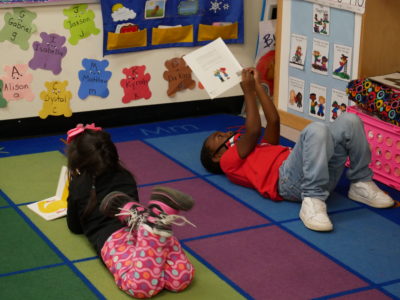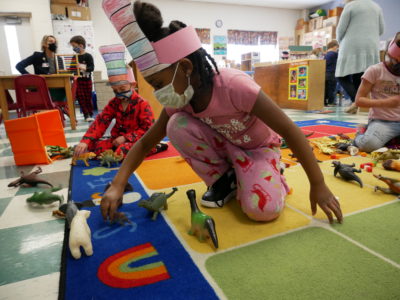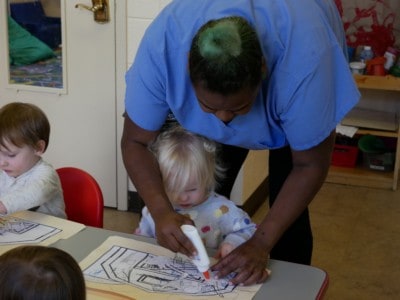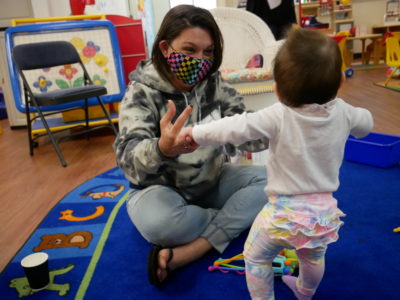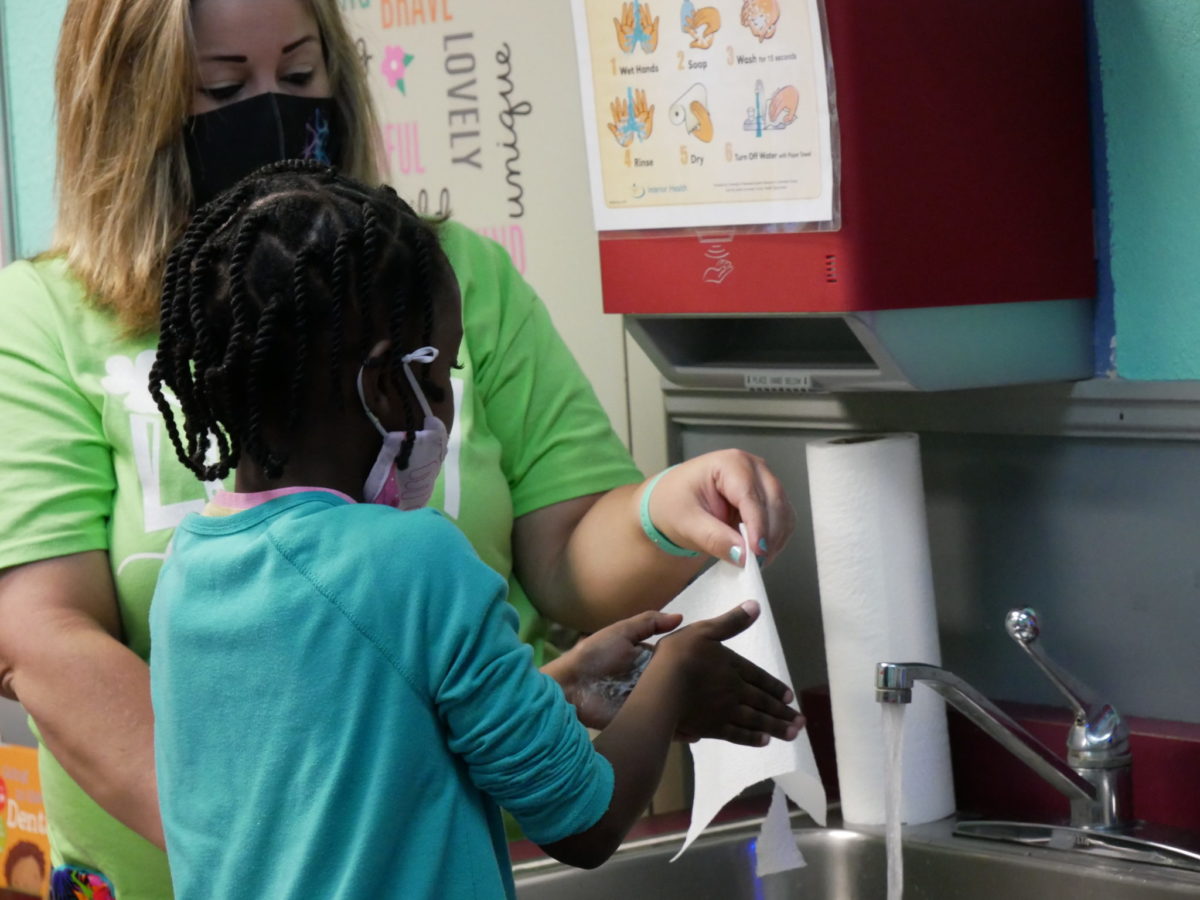
|
|
An estimated $1.3 billion is coming to North Carolina to stabilize and strengthen child care — a sector that is still fragile as the state looks towards pandemic recovery. EducationNC spoke with Susan Perry, chief deputy secretary at the North Carolina Department of Health and Human Services, on how the department is aiming to use the American Rescue Plan Act (ARPA) funds.
The federal government is providing these funds through two streams. The first, which includes $805 million for the state, is aimed at stabilizing child care providers. These funds should help child care providers who were not eligible for previous grants through Child Care and Development Block Grant funds, according to the Center for Law and Social Policy. The money can be used to help providers open or reopen their doors, pay employees, and provide mental health supports for educators and children, reads a White House statement.
The second stream, which includes about $503 million for North Carolina, is meant to make child care more affordable for parents. This stream is more flexible, according to the White House, which also says the funds can be used to “increase access to high-quality care for families receiving subsidies, increase compensation for early childhood workers, and meet other care needs in their states.”
The General Assembly will pass its own legislation on how that federal relief money can be spent, which might affect these plans.
Continued stabilization
Enrollment across the state is still below pre-pandemic levels, Perry said, estimating the vacancy rate at 40%. About 90% of children whose parents rely on child care subsidy assistance have returned to their child care arrangement, she said, which means providers are mostly missing out on pre-pandemic revenue from private-paying parents.
Within those two funding streams, the department is planning to continue supporting providers with many of the strategies they have used over the last year to help them stay afloat, Perry said. The federal relief funds will provide more operational grants to providers to cover costs like rent, utilities, materials, and staff compensation. The state is currently providing grants to 4,000 providers through federal relief funds from December.
The state might offer some parameters on these grants, Perry said, to encourage providers to use the funds for teacher recruitment and retainment and to offer scholarships for families who fall above the child care subsidy eligibility threshold but still struggle to afford care.
“While much of the workforce is returning to work at some level, we still have lost folks from the workforce, and we know that people are underemployed, that they’re still not having as many working hours as they may have had pre-pandemic,” Perry said.
For parents who do qualify and rely on child care subsidy assistance, Perry said the department is planning to continue covering co-payments.
Workforce compensation
The state is also considering how to use the one-time federal relief funds to invest in the early childhood teacher workforce, Perry said. Early educators are seven times more likely to live in poverty than K-12 teachers in North Carolina. Many early educators continued working throughout the pandemic, providing care for children of working parents and remote learners whose schools were closed.
“We’re definitely hearing that our child care programs are constrained in their ability to hire a qualified workforce, and we know the answer to that is actually building a workforce that has both opportunities for compensation growth and also for educational growth because they want to be in the field,” Perry said. “Otherwise, child care businesses end up just competing with other employers who are primarily recruiting individuals who don’t have specialized education and training, so I’m thinking of places like Target, etc.”
Perry pointed to the education-based pay supplements from the Child Care WAGE$ program, bonus payments, and partnerships with preparation programs at community colleges as potential strategies for the ARPA funds.
She also said a longer-term approach would include compensation parity between NC Pre-K teachers with B-K licenses in public and private settings, an item in Gov. Cooper’s budget.
“I think all of this speaks to the continued need to really get underneath the financing strategy for child care,” she said. “It is right now largely tuition-based, and it’s an inadequate strategy. It provides a public good, it builds our future workforce, and it supports our current workforce. And we’ve got to do more and find a different financing strategy if we’re ultimately going to allow for compensation parity for our early childhood teachers, and get them to have a profession that makes them both want to get into the field and stay in the field.”
Learning loss, system strengthening
The federal relief funds will also be used to address missed learning opportunities from the pandemic. NC Pre-K, the state’s public preschool for at-risk 4-year-olds, saw a sharp enrollment decline, falling from about 31,000 children to 22,000 this school year, Perry said. Many of those children were learning remotely.
“As you can imagine, there’s only so much you can do with remote learning with 4-year-olds,” she said.
The department is both looking at a summer learning loss program for incoming kindergartners and an option for parents to re-enroll their children who participated in NC Pre-K last year.
The department’s list of priorities also includes helping educators meet the social and emotional well-being of children as they return to formal early learning environments from the pandemic, addressing racial disparities in preschool suspension and expulsion, and temporarily raising subsidy reimbursement rates.
Right now, those subsidy rates vary widely depending on the provider’s location. House Bill 574, filed with bipartisan sponsorship this month, would allocate recurring funds to raise those rates and create a statewide floor for providers in counties with rates lower than the state average.
These are not long-term fixes to complicated problems, Perry said.
“Many of these pieces lead us to post-pandemic recovery,” she said. “We still have to continue to invest in and build our early childhood infrastructure if we want to address these problems for the long term, and really support working families with high-quality child care that gets their children in the best place for school success with teachers who are well trained and educated, and also gives them the support they need to be at work and be focused on the job. So there’s a lot of work to do post-recovery there as well.”



